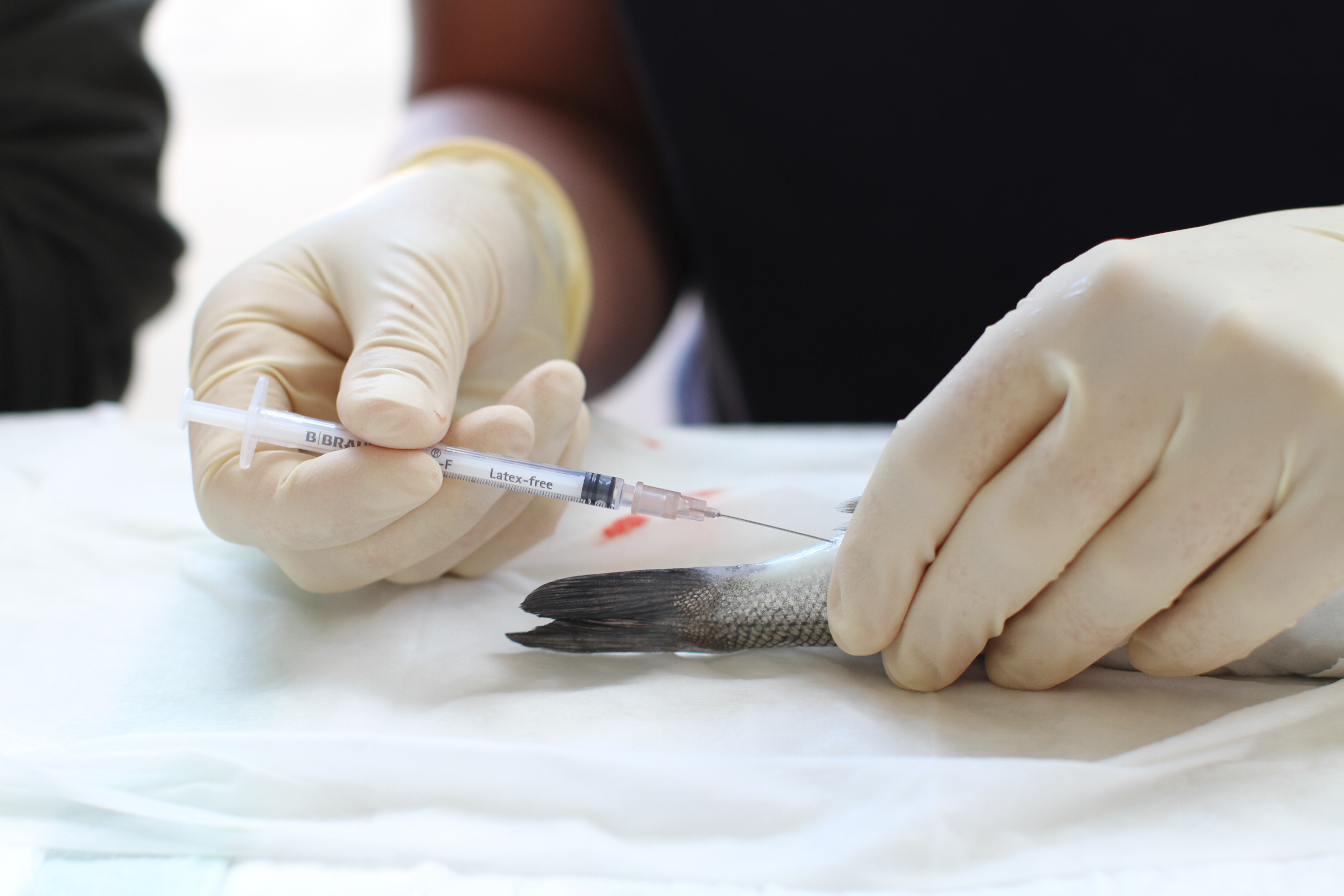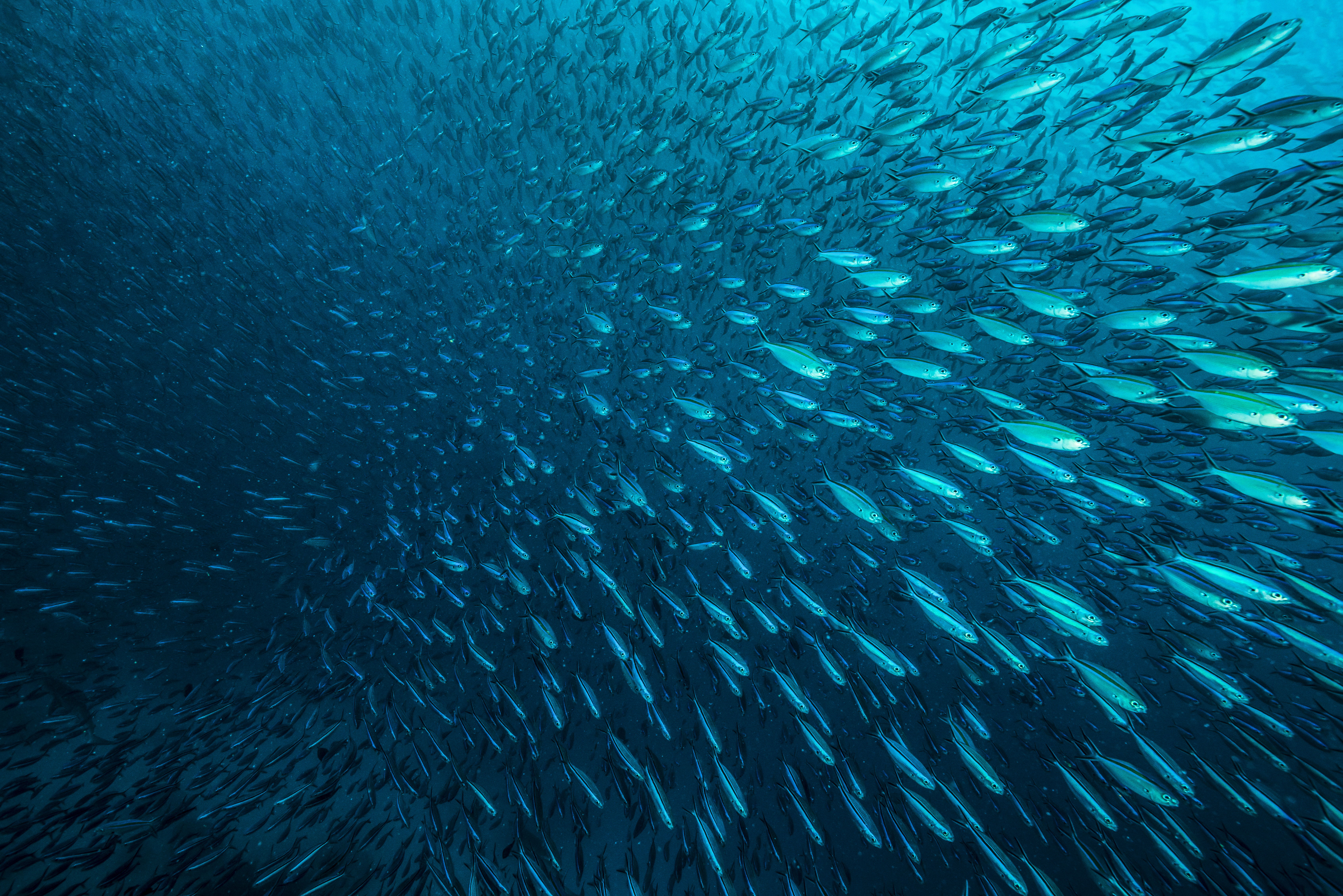Workspace

Aquaculture serves the sustainable and animal welfare-friendly production of fish as a foodstuff. Healthy fish, healthy food. In view of the increasing social relevance of animal welfare aspects and the resulting political and regulatory adjustments, there is a need for innovative concepts for the continuous recording of fish welfare, which we are addressing in this area of work at Fraunhofer IMTE. Research currently focuses on improving the husbandry conditions of fish in aquaculture in terms of animal welfare and health, with all aspects from behaviour and external appearance to laboratory tests and cell culture. With our in vitro research, alternatives to animal testing are found.
Both husbandry conditions and the feed used have an influence on the health and welfare of fish. These aspects, as well as the identification of other influencing factors, are the focus of our research.
The aim is to contribute to the improvement of the general health of fish, as well as to the development of new animal welfare standards.
With our many years of expertise in the field of fish health and cell isolation, as well as a background in veterinary medicine and molecular biology, we are able to successfully work on internal and external projects in applied research and development and transfer the knowledge generated to industry.
